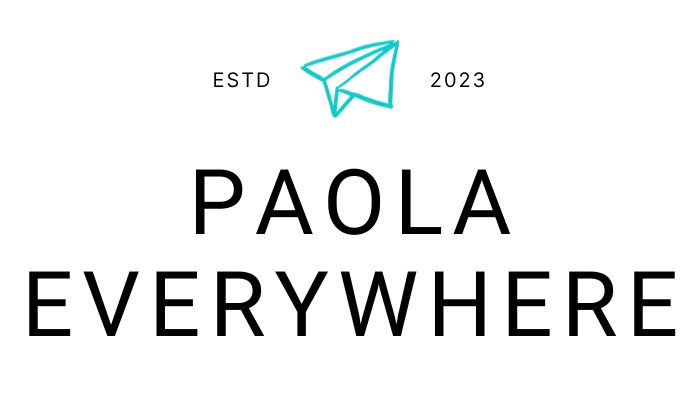When it comes to family-friendly adventures in Malta, you can’t miss the Esplora Interactive Science Centre. Located in a 20th-century naval hospital in Kalkara, just across the Grand Harbour from Valletta, Esplora transforms learning into an unforgettable play experience, as you can discover by reading this article.
Table of Contents
Why Visiting Esplora Interactive Science Centre in Malta
Esplora makes science fun, accessible, and hands-on. It is designed as a playground of knowledge, encouraging you and your kids to touch, try, and explore. In my opinion, it is one of the best family-friendly attractions in Malta, offering something for all ages. We spent almost an entire day there, enjoying the fantastic on-site restaurant, too.
PLAN YOUR TRIP TO MALTA
To get the most out of your visit to Malta, enjoy the convenience of the all-inclusive Malta Multi Pass. It includes open-top bus rides, cruises, and entry to Heritage Malta and other attractions.
During your trip, you can stay in touch with family and friends with Holafly eSIM and enjoy an unlimited connection at 3G/4G/LTE speeds.
Renting a car in Malta allows you to explore any beach or attraction at your own pace. Plus, you can travel with confidence by securing Heymondo travel insurance, ensuring that your adventures are worry-free.
My son loves interactive museums, and even though it may seem like he’s just playing, he learns a lot from these experiences. The interactive exhibits cover various themes, ranging from aerodynamics to the human body, allowing you to spend hours experimenting and discovering with your kids.
During our visit, he participated in a soap bubble science show and played with electrical circuits. It was amazing! I also learned many interesting facts about the environmental impact of the food we consume while travelling and the water shortage in Malta, which I was unaware of.
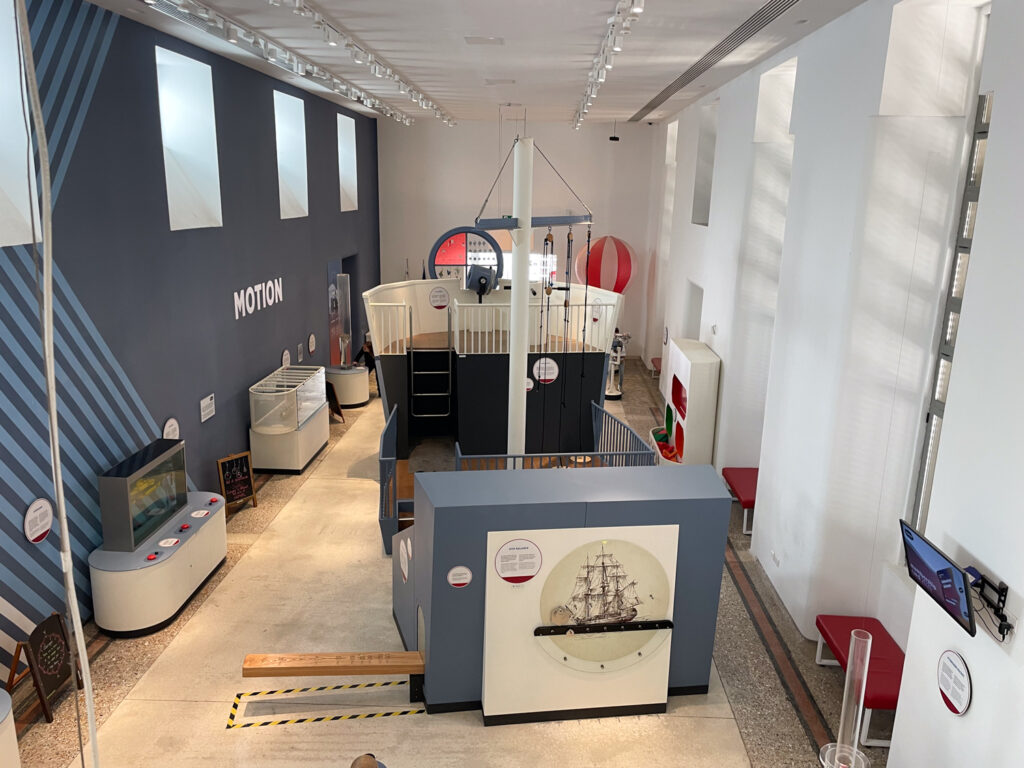
What to See in Esplora Interactive Science Centre
The Esplora Interactive Science Centre provides an engaging exploration of science and technology through its various thematic zones:
- The Main Exhibition Halls
- The Activity Centre
- The Outdoor Science Area
- The Planetarium
Each area is designed to captivate visitors of all ages, blending education with hands-on experiments and interactive exhibits. We spent most of our time in the Main Exhibition Halls, as there is so much to see and experience there.
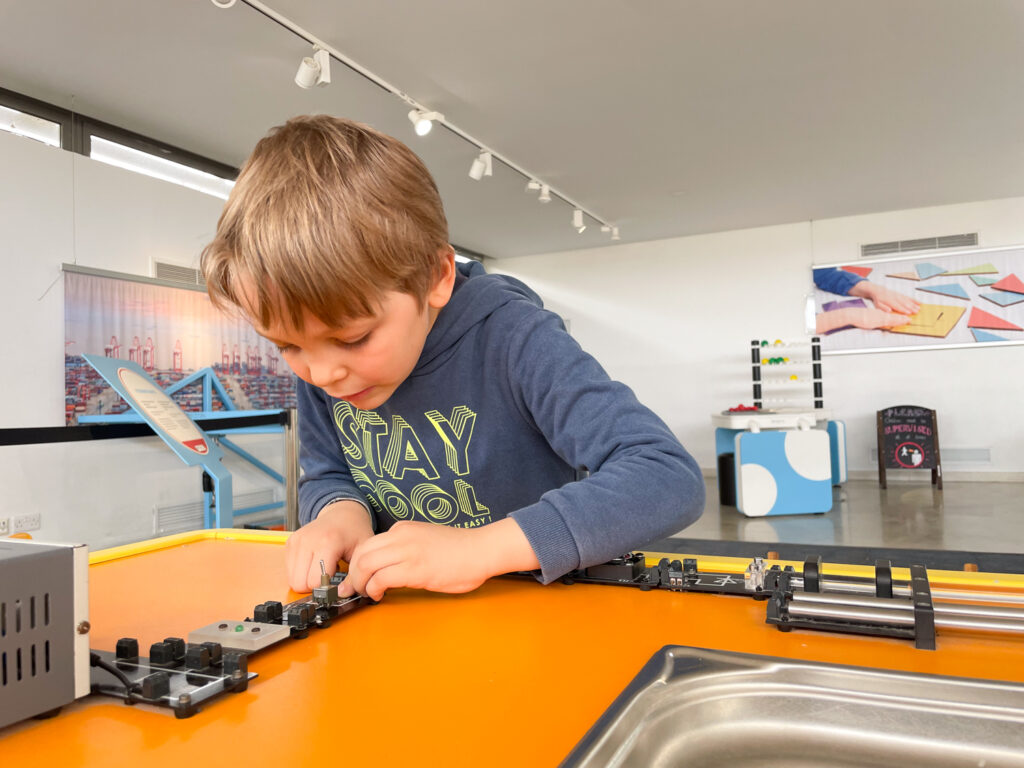
The Main Exhibition Halls: Engaging Science to Play With
The Main Exhibition Halls cover various topics, including mechanics, ecology, and optics. Here, you can test your reflexes, learn how your brain works, and explore energy sources through fun games. You can even build your own electrical circuits, play with optical illusions, or experience a racing car simulator.
Depending on how deeply you want to explore the exhibits, you can easily spend 2 to 4 hours inside. Or the whole day, like us!
My son had a great time trying everything out, but I was particularly impressed by the exhibition focused on sustainability. It was highly engaging and interesting, especially the one about water scarcity. You can find those specific exhibits exclusively at Esplora since they highlight Malta’s unique environment.
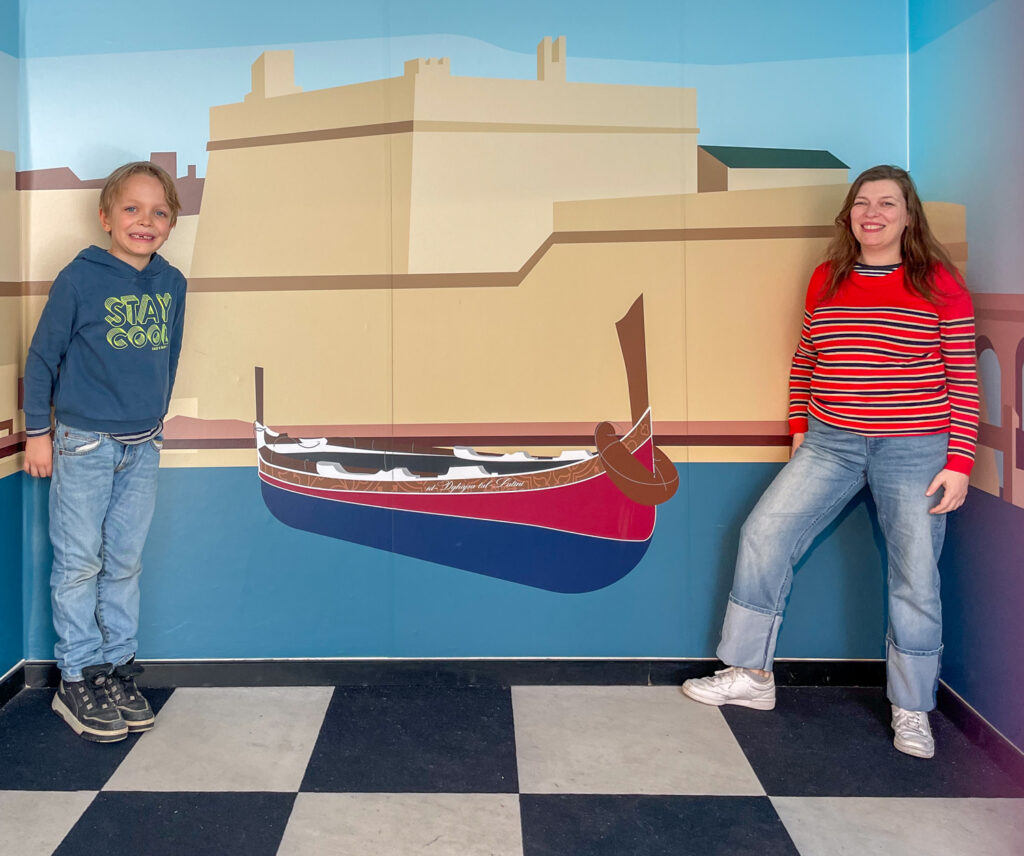
Ecology for Everyone: Embracing a Sustainable Life
In Esplora, I learned much about Malta and the environmental impact of living on an island. For example, some of Malta’s traditional dishes, like rabbit, are now imported, while other vegetables, such as cauliflower, are locally grown at a distance of km 0.
There are also interactive installations that demonstrate how to make a home more sustainable. These installations compare insulation’s environmental impact and benefits versus using air conditioning.
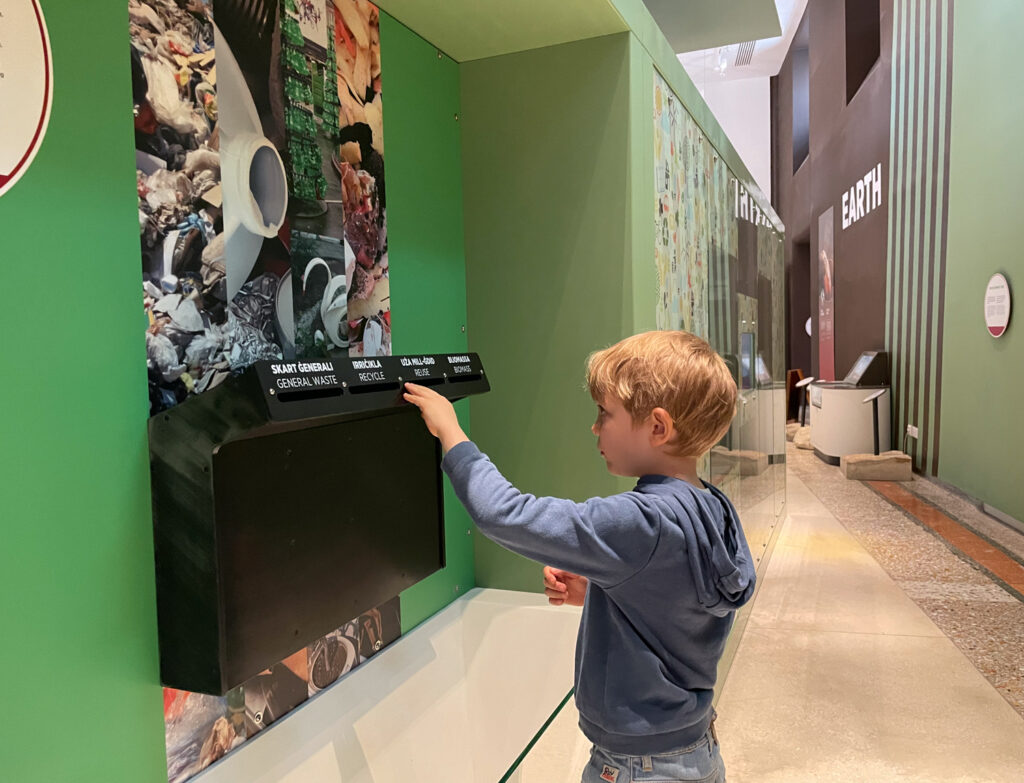
Overcoming Water Scarcity in Malta: How to Make Water Drinkable
What I found most interesting was the explanation about water in Malta. As soon as I arrived in Malta, I noticed that the water tasted terrible, both from the tap and bottled sources, even though it is safe and drinkable. Malta is one of the top ten water-scarce countries with no natural springs, lakes, or rivers. The water you drink in Malta is all pumped from the ground or sourced from the sea, even bottled water!
At Esplora, I learnt about the complex steps involved in preparing water for drinking. Chadwick Lakes serves as a water reservoir in Malta, fed by rainfall; however, it cannot be used for drinking water because it runs dry during summer. Therefore, water must be pumped from the ground.
The water is then disinfected with chlorine to kill bacteria, even though this results in a strong taste. Chlorine is also added to keep the water clean on its way to the tap, ensuring it doesn’t get contaminated in the pipeline. Additionally, chemicals can be used to remove calcium and prevent limescale buildup in household appliances.
Other processes used to purify the groundwater include reverse osmosis, which forces water through a membrane with tiny holes to capture contaminants, and mixing groundwater with desalinated water to meet EU standards.
Another method of obtaining drinking water in Malta involves pumping from seawater wells drilled close to the shoreline. Since this water has already been filtered through rocks, it contains fewer particles. However, acid must be added to prevent scaling in the water processing plant.
This part of the presentation made me reflect on how challenging it is to access good drinking water directly from the tap, something we often take for granted in Europe. This issue highlights the realities of water scarcity, even in EU countries.
The Activity Centre: Exploring the Science Behind Soap Bubbles
The Activity Centre hosts science demonstrations and workshops that frequently change, ensuring there’s always something new to explore. During our visit to Esplora, we attended a science show focused on soap bubbles.
It was incredibly fun, and if you’ve ever participated in a soap bubble show, you know what I mean! What was unique about this experience were the scientific explanations. I didn’t realise it was possible to create an educational show with this scientific accuracy.
Why are bubbles round? What happens if you use different shapes? How big can bubbles get? Can you only put air inside a soap bubble? The show was not only entertaining but also incredibly educational and intriguing. So, if you’re at Esplora during a science show, don’t miss it!
Workshops and science shows are scheduled throughout the day at fixed times. To participate, you just need to go to the Activity Centre in advance and wait for the activity to start. The soap bubble show was included with our tickets, but some special events may not be, so check at the entrance for details.
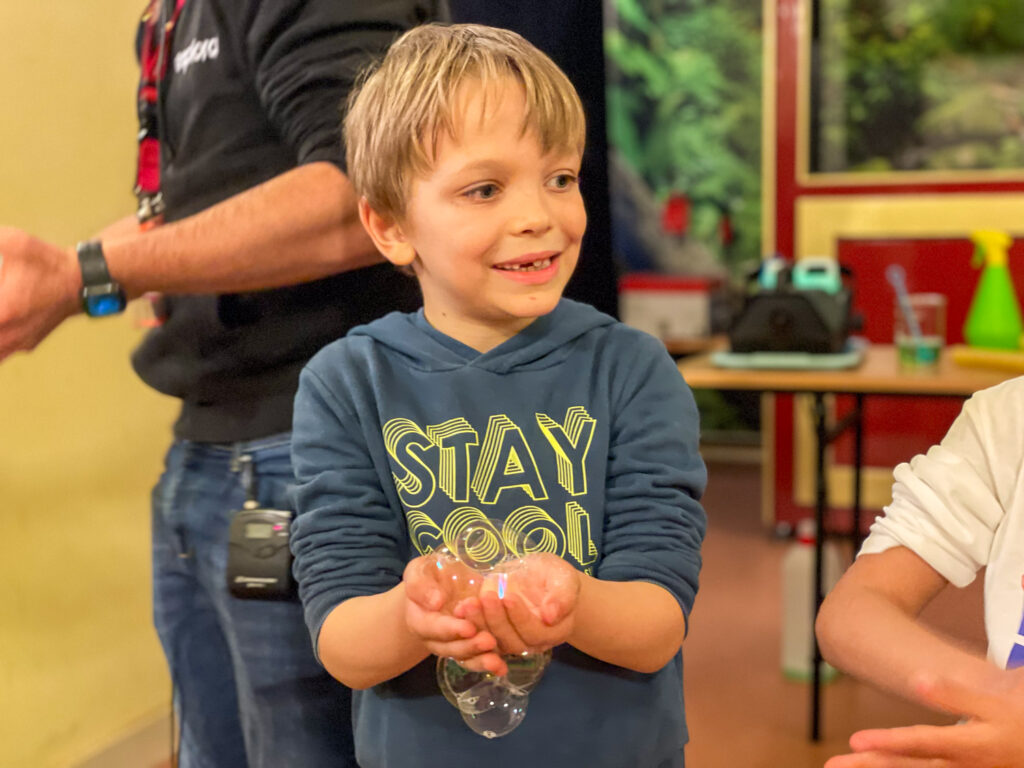
The Outdoor Science Area
The Outdoor Science Area features water games and large-scale physics experiments, making it perfect for a sunny day. During our visit, the weather was quite windy and cool, so we didn’t spend much time there. However, we enjoyed exploring the underground path with slides. We would definitely like to return to Esplora on a sunny day in the summer!
The Planetarium
The Planetarium dome theatre has a diameter of 10.7 meters and offers high-quality visual shows, transporting you into space. The stunning visuals are perfect for both kids and adults.
The shows, which are in English, vary throughout the week and are both entertaining and educational, focusing on planets, the Solar System, and the entire Universe. Some movie options include “Kitz the Cat’s Supermoon Adventure,” set in a future where humanity no longer exists and intelligent cats have evolved to clean up space junk.
Another option is “Dream to Fly,” a poetic and touching story of aviation development throughout the ages, where you can discover more about the first plane, the hot air balloon, and even Leonardo da Vinci’s flight inventions.
You can buy tickets for the Planetarium at the Esplora reception for €2. Inside the Planetarium building, you can also enjoy the Universe Exhibition, which features 13 interactive exhibits related to the cosmos and life in space.
Unfortunately, we didn’t have the chance to see a show at the Planetarium during our visit because we spent most of our time in the Main Exhibition Halls until the museum closed. At the end of our day at Esplora, they actually had to encourage us to leave since my son kept playing with the interactive exhibits, and we almost forgot to retrieve our jackets from the lockers!
Discover the Rich Heritage of the Former Royal Naval Hospital Bighi
The Esplora Interactive Science Centre is on the edge of Valletta’s Grand Harbour. The building itself has an extraordinary history that dates back to the 17th century, with a rich, centuries-old story within its walls.
The nearby main Villa was designed in 1675 by Maltese architect Lorenzo Gafa to serve as a private summer residence for Fra Giovanni Bichi, an Italian Knight and Prior of Capua.
In the 19th century, when the Maltese Islands were under British rule, the Villa came under the control of the Civil Government. In 1827, King George IV permitted the Admiralty to convert the building into a naval hospital.
The foundation stone of the Royal Naval Hospital Bighi was laid on March 23rd, 1830. For many years, this hospital provided nursing and medical care for numerous casualties from the Mediterranean conflicts during the Crimean Wars, World War I, and World War II.
If you’re interested in learning more, you can visit the Esplora website for information about guided tours held regularly in the summer.
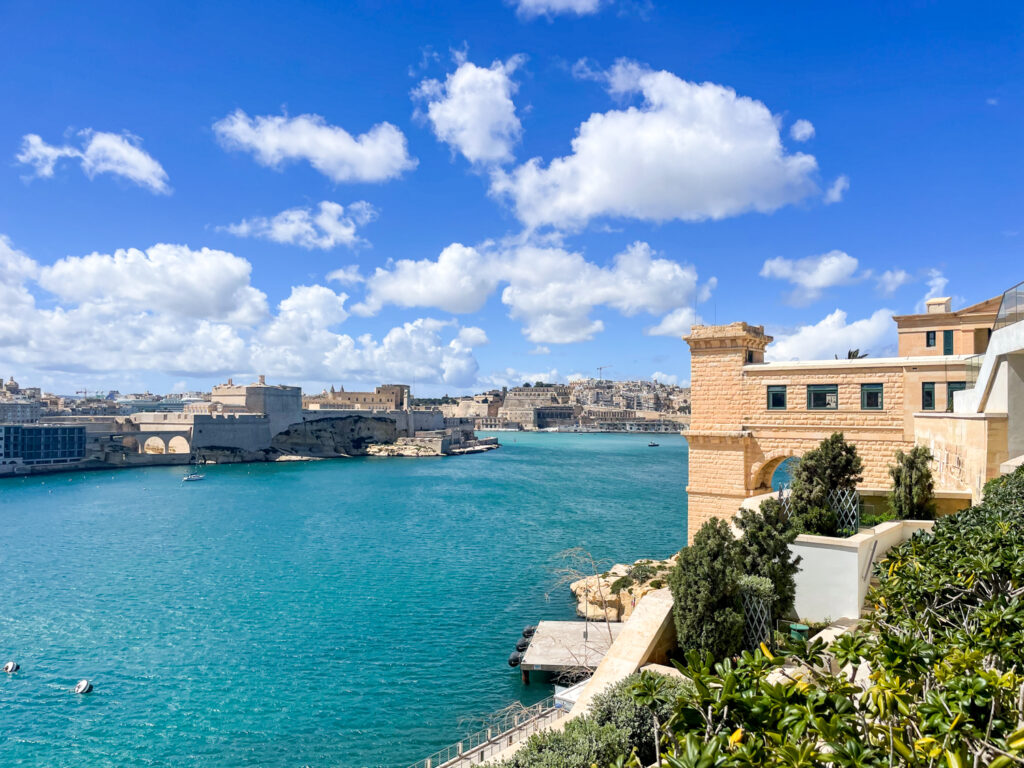
How to Plan Your Visit to Esplora Interactive Science Centre
Depending on how deeply you want to explore the exhibits, you can easily spend 2 to 4 hours at the Esplora Interactive Science Centre. We spent the whole day there because my son loved interacting with every exhibit, and I enjoyed it, too.
We spent most of our time in the Main Exhibition Halls, but during summer, I’m sure you’ll enjoy the Outdoor Science Area, too. It basically serves as a scientific playground. Here, you can learn how water moves, build a miniature dam, or even run through a series of tunnels like a prairie dog.
Before entering the museum, you can leave your bag in the lockers. The locker rental is available upon request for a deposit of €5. Science shows and workshops are scheduled on a first-come, first-served basis. Be sure to check the times for activities and arrive at the meeting point 15 minutes in advance to secure your spot.
Where to Eat: EsploraCafé
If you plan to spend the whole day at Esplora, I highly recommend having lunch at the restaurant EsploraCafé. It’s super convenient and offers excellent food at affordable prices.
The EsploraCafé has some of the best food we tried in Malta, along with a stunning view of the Grand Harbour. The menu offers a simple yet tasty menu for a light snack or a quick meal, and the coffee is delicious.

Esplora Opening Hours
The Esplora Interactive Science Centre is open Tuesday to Friday from 9:00 am to 3:00 pm, and on weekends and bank holidays from 10:00 am to 5:00 pm.
Esplora Admission Fee
Tickets cost €8 per person, while children and teenagers pay €6. Kids under 2 can enter for free. Planetarium tickets cost €2. You can buy the tickets at the reception on the day of your visit.
Workshops or science shows are usually included with the tickets, but you should wait at the Activity Centre in advance. Please note that some special events may not be included, so check at the entrance.
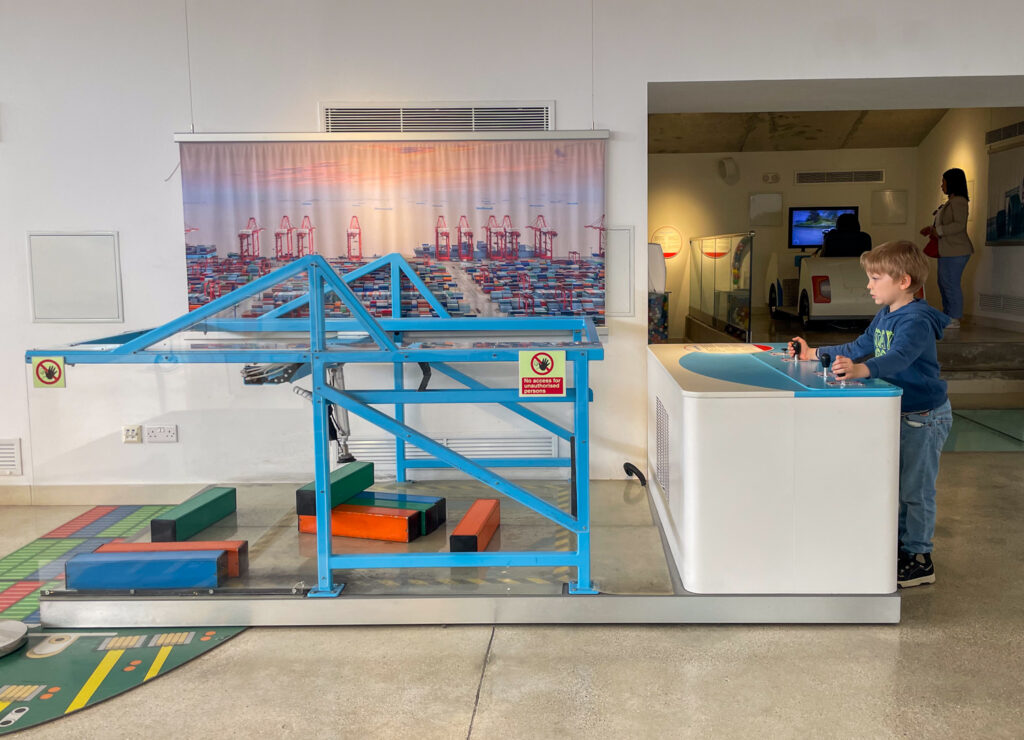
How to Reach the Esplora Interactive Science Centre
Esplora Interactive Science Centre is in Kalkara, which is up the hill. If you are visiting by car, parking is available in the square and along most of the roadside. We were able to find parking along the roadside easily, but keep in mind that it was the low season (Malta’s traffic can be terrible). I used Google Maps to get there.
You can also reach Esplora by public transport, taking the number 3 bus from Valletta, which stops directly opposite the Centre. Alternatively, you can use the sightseeing Hop-on Hop-off bus. The Esplora stop is conveniently located just outside the Science Centre, allowing you to begin your visit at Esplora and then continue your journey on the Hop-on Hop-off bus to explore the entire island.
Esplora Interactive Science Centre
Dawret Fra Giovanni Bichi,
Kalkara KKR1320
Where to stay in Malta
The best areas to stay in Malta are St. Julian’s, St. Paul’s Bay, and Valletta. St. Julian’s is well-known for its vibrant nightlife, making it an ideal spot for those looking to enjoy evening entertainment. A great place to stay in St. Julian’s is the stunning Mercure St. Julian’s Malta.
Valletta, the walled fortress city and capital of Malta, is filled with beautiful churches, museums, and palaces. I recommend Valletta for a romantic city break, and the luxurious AX The Saint John is the best hotel for an unforgettable stay.
St. Paul’s Bay is perfect for family trips, as it offers a calmer atmosphere compared to St. Julian’s and Valletta, along with several great playgrounds for children. For accommodation, you can choose the Best Western Premier Malta.
Final Thoughts about Esplora Interactive Science Centre
In conclusion, the Esplora Interactive Science Centre is one of those places where education and entertainment blend perfectly. Engaging visitors of all ages, Esplora effectively promotes a deeper understanding of science for kids of all ages. If you’re in Malta and want to do something fun, smart, and a little off the usual tourist track, add Esplora to your list, and don’t forget to leave a comment.
